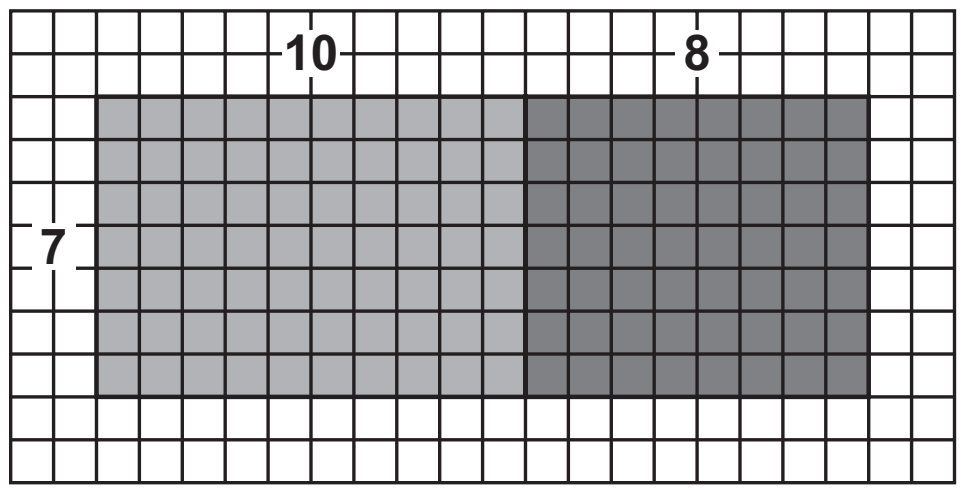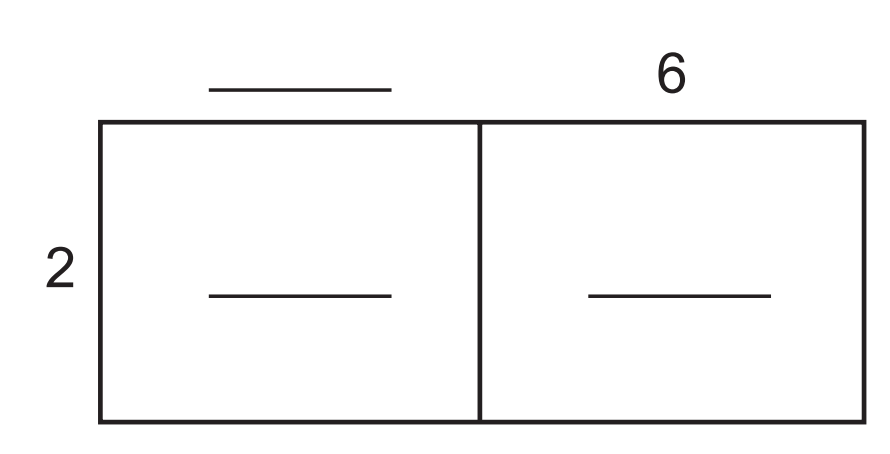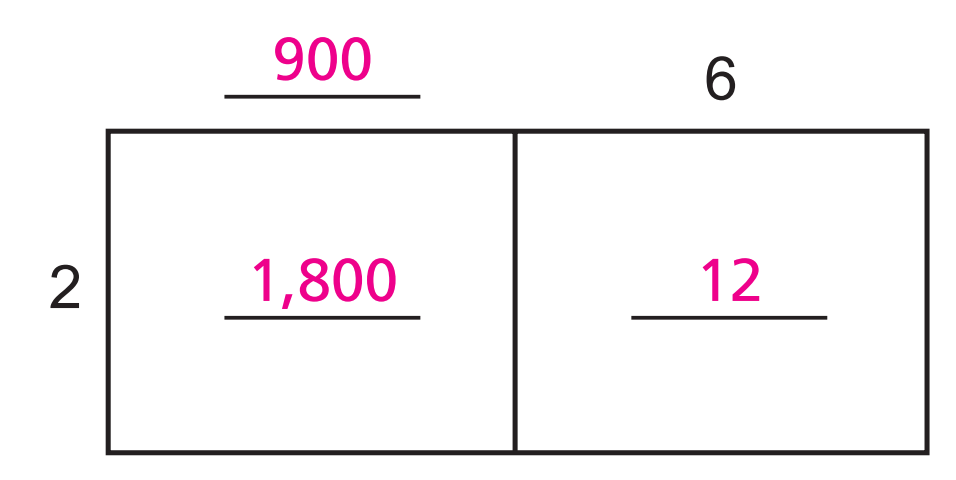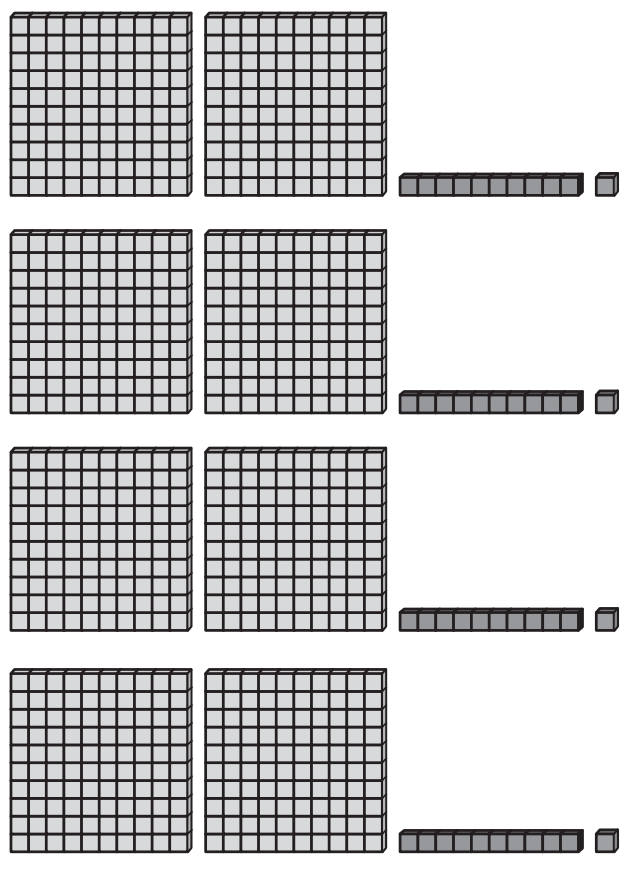#5: What multiplication equation uses expanded form and the Distributive Property to solve 8 × 63?
A) (8 × 60) + (3)
B) (8 × 60) + (8 × 3)
C) (8 × 6) + (8 × 3)
D) (8 × 6) + (8 × 3 × 10)
B) (8 × 60) + (8 × 3)
Which multiplication equation is shown by the area model? 
![]() 7 × 18 = 126
7 × 18 = 126
![]() 8 × 17 = 136
8 × 17 = 136
![]() 10 × 15 = 150
10 × 15 = 150
![]() 10 × 17 = 170
10 × 17 = 170
![]() 7 × 18 = 126
7 × 18 = 126
#8: Multiply
6x8,400
6x8,000=___________
6x400=_____________
6x8,400=____________
6x8,000=48,000
6x400= 2,400
6x8,400=50,400
#3: What is the product?
149 × 6=
894

What numbers will complete the area model for 2 × 906?

#2: What is the product?
24x9=
216
#4: What is the product of 9 × 1,267?
11,403
Which multiplication equation is shown by the base-ten blocks?

4 × 211 = 844
or
211 x 4 = 844
There are 4 rows of chairs in a classroom. There are 2 teacher chairs and 13 student chairs in each row. How many teacher and student chairs are in the classroom?
![]() 8
8 ![]() 60
60
![]() 52
52 ![]() 104
104
![]() 60
60
#9: Use partial products to show the product of 8 × 24.
8x20=160
8x4=32
160+32= 192
Students are watching a school play. There are 12 fourth grade students sitting in the first row and 9 fourth grade students sitting in the second row. There are 3 times as many third grade students sitting in these rows. How many third grade students are sitting in these rows?
63 third grade students
Marley is packing boxes with cans of paint to be used with an art project. She has 80 cans of paint, and each box holds 8 cans of paint.
Marley packed 6 boxes. She needs to know how many cans of paint she has left. Which equation shows how many cans of paint, p, are left?
A) 80 − 8 × 4 = p
B) 80 − 8 × 6 = p
C) 80 − 8 − 6 = p
D) 80 − 8 − 2 × 6 = p
B) 80 − 8 × 6 = p
An art teacher displays 5 rows of 11 paintings and 6 rows of 21 drawings. How many paintings and drawings does the art teacher display?
181 paintings and drawings
Marley is packing boxes with cans of paint to be used with an art project. She has 80 cans of paint, and each box holds 8 cans of paint.
How many cans of paint does Marley still need to pack?
32 cans of paint